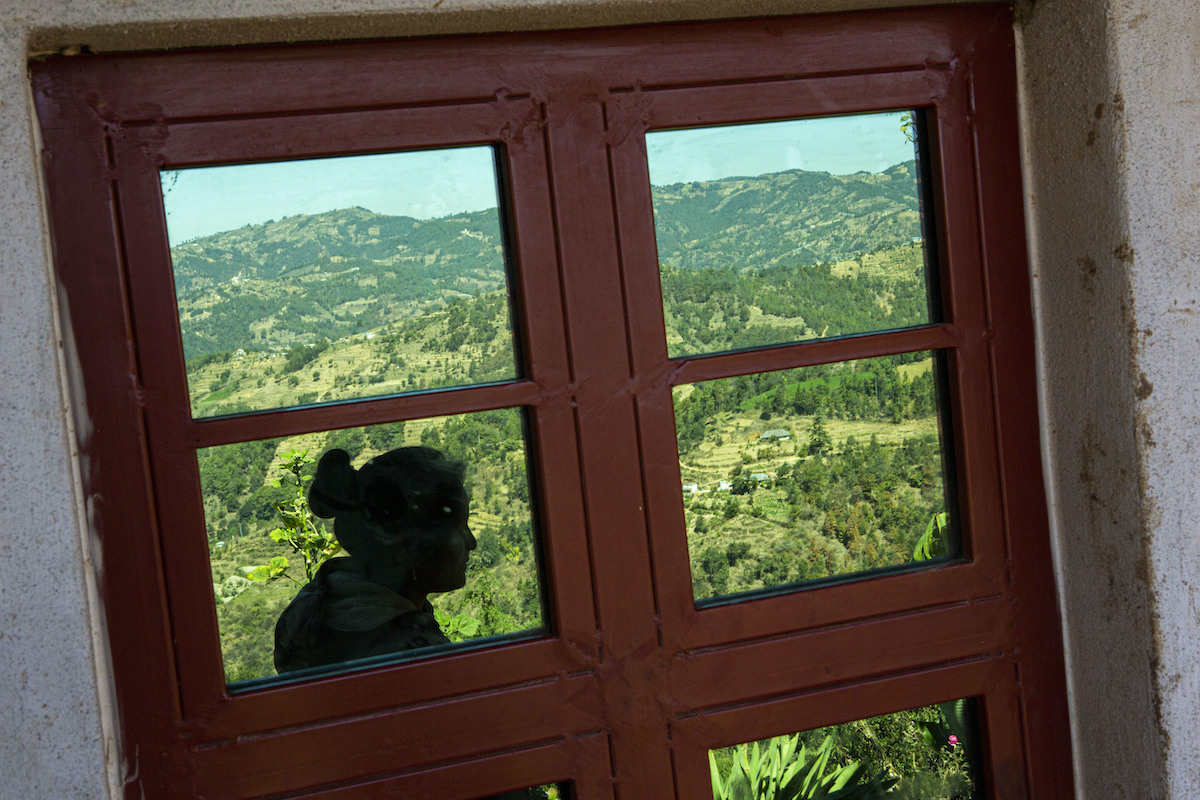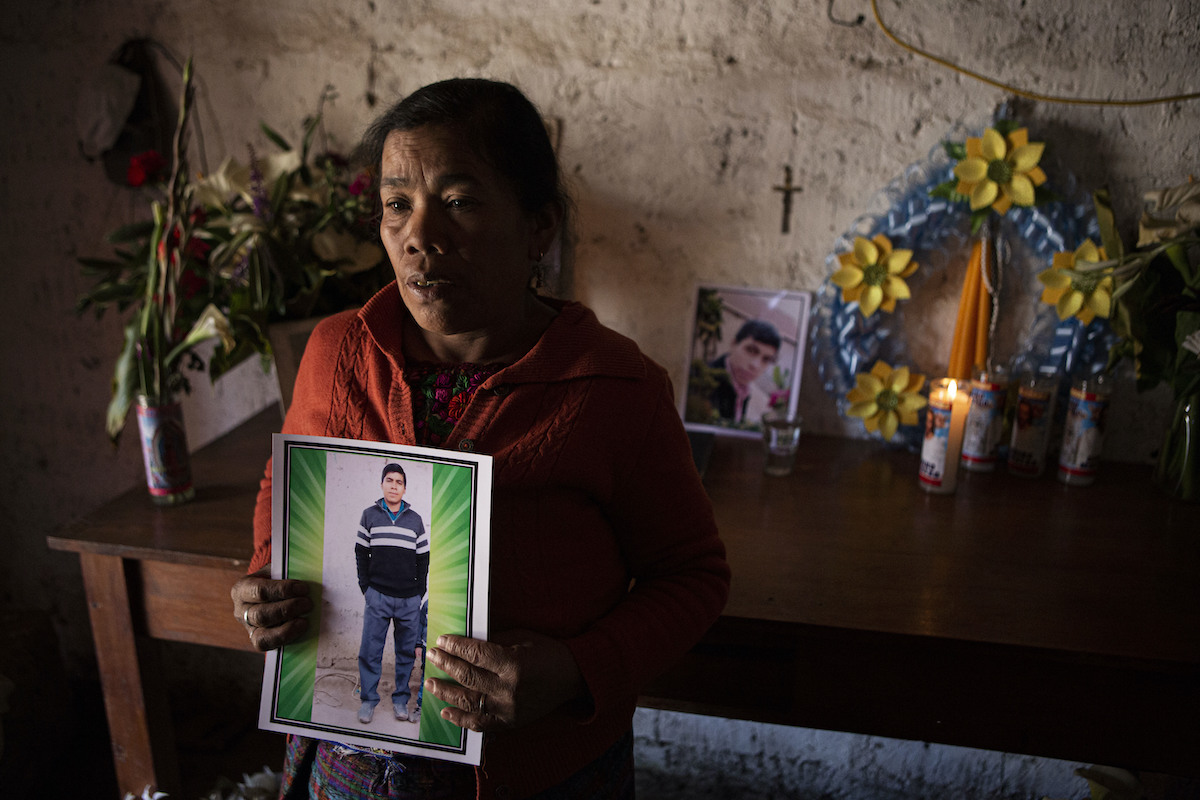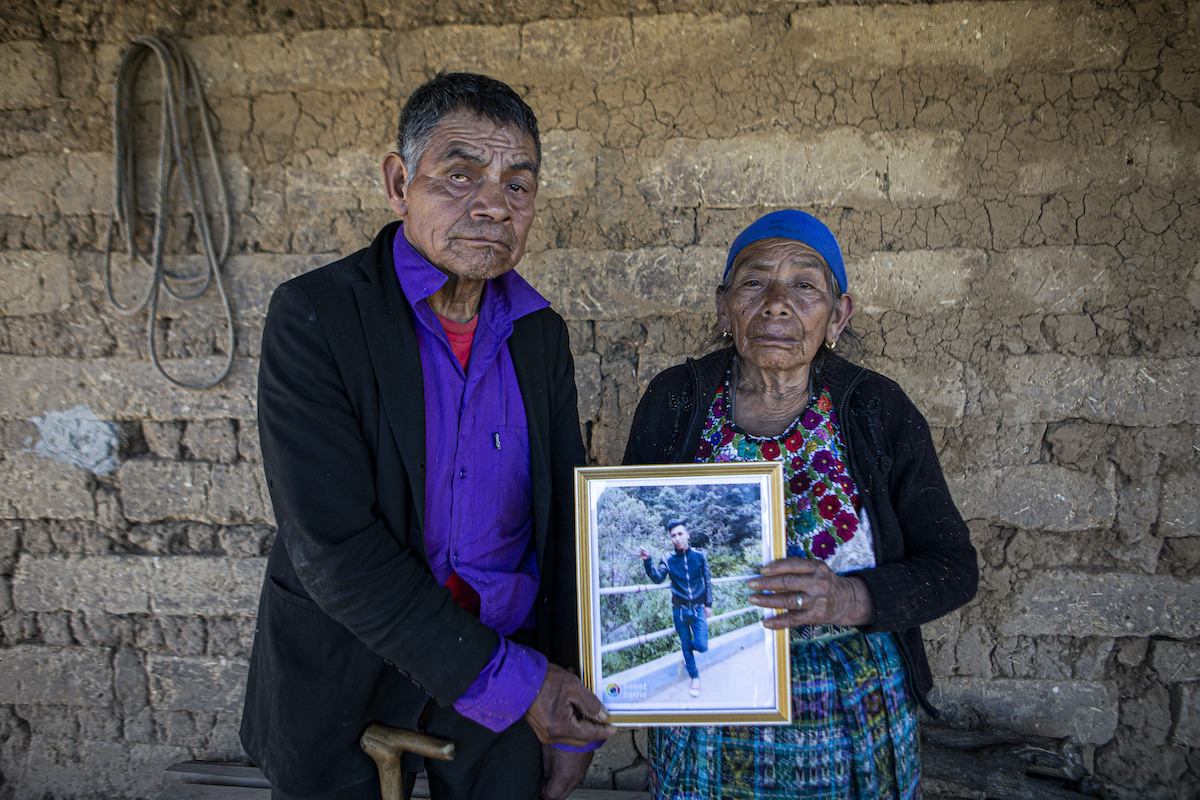

Saidy Aguilón is reflected in the window of a home in Comitancillo, Guatemala, Wednesday, January 27, 2021. (AP Photo/Oliver de Ros)
By SANTIAGO BILLY, Associated Press
COMITANCILLO, Guatemala (AP) — In this impoverished Indigenous village, families are convinced that 13 of their relatives were among the 19 bullet-ridden, burned bodies found in northern Mexico near the U.S. border last week.
Mexico has not yet identified the bodies, so it’s not clear they were migrants. But people in Comitancillo, near Guatemala’s border with Mexico, are so sure that they have already put photos of the mainly youthful migrants —10 men and three women— on traditional altars for the dead, surrounded by candles and flowers.
Irma Yolanda Jiménez Pérez says her 17-year-old nephew, Rivaldo Danilo Jiménez, is among the dead, according to the smuggler who accompanied the group.
“The man who took them, he called him (her brother) saying there had been bad news,” Jimenez Pérez said. “My brother said, ‘What is the news?’ And then he said, ‘They are dead.’”
“They say they shot them and then they burned them, and that is what we know,” she added.
While Guatemala’s Foreign Ministry is collecting DNA samples from the relatives to compare with that of the charred corpses, what the families say matches all too well what is known about the massacre.
On Saturday, authorities in the northern Mexico state of Tamaulipas found 19 bodies piled in a burned-out pickup truck on a dirt road across the Rio Grande from Texas. Four bodies were found in the cab and the other 15 were piled in the bed of the truck.
All had been shot, but shell casings were not found at the site, leading investigators to believe they were killed somewhere else.


Elena Marroquín poses for a portrait with a photo of her grandson Rivaldo Danilo Jiménez, in her home in Comitancillo, Guatemala, Wednesday, January 27, 2021. (AP Photo/Oliver de Ros)
Camargo, the area where the bodies were found, has long been the scene of turf battles between rival drug gangs, and authorities said three rifles were found in the burned pickup truck.
If the bodies are identified as the Guatemalan migrants, the killings would revive memories of the 2010 massacre of 72 migrants in the same gang-ridden state of Tamaulipas.
Jiménez Pérez said the timing of the Tamaulipas killings matches when relatives lost contact with the 13 Guatemalan migrants. “My brother said he (Rivaldo Danilo) always texted him and let him know where they were, but then he stopped texting,” she said.
Like Rivaldo Danilo’s family, farmer Ricardo García Pérez has already erected an altar to his daughter Santa Cristina García Pérez, 20. She set off with the others for the U.S. border on January 12. But then he received a phone call, also from a migrant smuggler.
“On Saturday, they told me that ‘your relative died… the vehicle they were in was burned and everything was reduced to ashes,’” he recalled.
Garcia Pérez, who had mortgaged his home to pay for his daughter’s trip, contacted the smuggler who had taken the local group north—a man known well in the village, who Garcia Pérez would not name and who apparently survived the attack.
“That’s when we started calling this guy, who cried,” García Pérez said. “Since then we haven’t heard anything from him.”
The group had left quietly with their smuggler just days before a couple thousand migrants set out from the Honduran city of San Pedro Sula in a caravan that drew international attention as it crossed into Guatemala and was broken up by authorities.


Germán and María Tomas pose for a photograph holding a framed portrait of their grandson Iván Gudiel, at their home in Comitancillo, Guatemala, Wednesday, January 27, 2021. (AP Photo/Oliver de Ros)
The reasons that led Comitancillo’s migrants to make the dangerous trip were varied, but all boiled down to the same thing: the hope of a better life. Rivaldo Danilo earned only about $6.50 a day working in local corn fields,and wanted to continue school. Santa Cristina went north in hopes of earning enough money to pay for an operation for a relative born with a cleft lip.
Saidy Aguilón, the wife of migrant Iván Gudiel Pablo, 22, said he left with the group because he wanted to work in the United States, to earn money to pay for treatment for his diabetic mother. He also had another dream: He played keyboard in a Catholic music group and wanted to buy better instruments for them.
Aguilón said her husband also suddenly stopped texting or calling around the time of the massacre.
The loss has left families in Comitancillo with nothing but their faith to rely on.
García Pérez has a message for those who killed his daughter. “I ask those men that did this, maybe they could do harm to her or get away with it, but her heart lives on, shining, with the Lord.”
Irma Yolanda Jiménez Pérez has a starker question, one that no doubt will be ringing through Mexico as well.
“Is there no justice for these human beings? Why did they do this?” she said. “We want an explanation, why did this happen to our family?”
“The people who did this, must have no heart,” she said.


